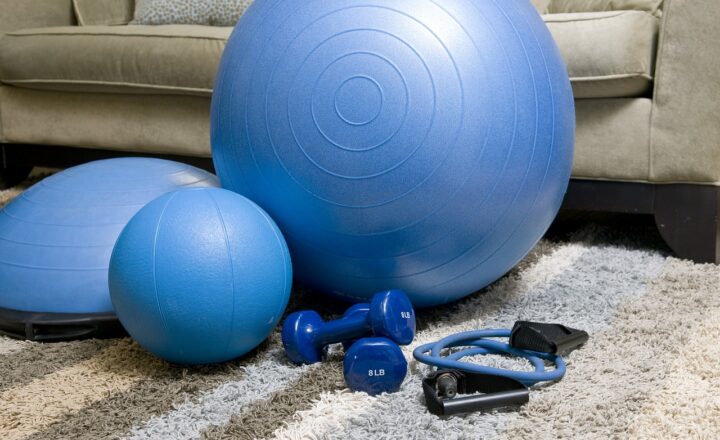
In today’s fast-paced world, maintaining a healthy lifestyle can be a challenge, especially with the rising costs associated with gym memberships. However, building a home gym can provide you with the convenience to exercise at your own pace without breaking the bank. Imagine having the flexibility to work out whenever you choose, without the intimidation factor often found in commercial gyms. In this article, we will explore how to create an effective home gym that fits within your budget.
1. Establish Your Workout Goals
Before diving into the equipment or layout, it’s essential to identify your fitness goals. This will guide your decisions on the type of equipment you need and the space you’ll require. Ask yourself questions like:
– What type of workouts do I enjoy? (e.g., cardio, strength training, yoga)
– How often do I plan to work out?
– Do I prefer guided workouts or would I like to create my own?
Your answers will help shape your home gym according to your preferences.
2. Choose the Right Location
The first step in creating a home gym is finding the right space. You don’t need an entire room; a corner of your living room, basement, garage, or even a balcony can work well. Make sure the location has enough space for you to move around comfortably and access the equipment you’re using.
Here are some tips for selecting a suitable space:
– Ventilation: Ensure there is a good airflow to keep the space cool during workouts.
– Lighting: Choose a bright and welcoming area to keep your motivation high.
– Flooring: If possible, use carpet, mats, or rubber flooring to create a safe environment and reduce noise.
3. Start with Essential Equipment
When building a home gym on a budget, it’s crucial to prioritize essential equipment that can support various workouts. Here are some affordable and versatile pieces of equipment to consider:
- Dumbbells: A set of adjustable dumbbells allows for a wide range of exercises, are minimal in space, and can be a budget alternative to a full weight set.
- Resistance Bands: These are low-cost, portable, and can be used for strength training, stretching, and rehabilitation exercises.
- Yoga Mat: Perfect for floor exercises, yoga, or stretching, providing comfort and grip during workouts.
- Stability Ball: Great for core workouts and can double as a chair for desk work to improve posture.
- Jump Rope: An inexpensive tool for cardiovascular workouts, easy to store, and can be used indoors or outdoors.
These items will provide you with the foundational tools needed to create a full-body workout regimen.
4. Find Creative Alternatives
You don’t always need to buy brand-new equipment to set up your gym. Consider creative alternatives that can save you money:
- Use Bodyweight Exercises: Exercises like push-ups, squats, and lunges utilize your body weight and don’t require any special equipment.
- Repurpose Household Items: Get creative by using items you already have at home, such as milk jugs filled with water, bags of rice, or even a sturdy chair for step-ups and dips.
- DIY Equipment: Consider making your own weights using sandbags, concrete blocks, or water bottles—all inexpensive and easy to assemble.
By using your creativity, you can often find effective workout tools right in your home.
5. Utilize Online Resources
With countless online workout videos and programs available for free or at a low cost, you can find various workouts that suit your fitness level and interests. Websites like YouTube, fitness apps, and health blogs provide ample content to keep your workouts fresh and engaging.
Look for the following types of resources:
– Workout Videos: Follow along with guided workouts focusing on specific areas or routines.
– Fitness Apps: Many apps offer personalized workout plans, tracking features, and even community support.
– Online Communities: Join forums, social media groups, or fitness challenges to connect with like-minded individuals who can provide motivation and support.
6. Stay Motivated and Consistent
Maintaining motivation can be challenging, especially when working out at home. Here are several tips to keep you engaged in your workout routine:
- Create a Schedule: Dedicate specific days and times for your workouts to build consistency.
- Set Up a Dedicated Workout Space: Make your space inviting and tailored to your preferences. Decorate, play music, or add motivational quotes to create an energetic atmosphere.
- Track Progress: Keep a workout journal or use apps to track your workout frequency and progress. Celebrate milestones to stay motivated.
By keeping the environment engaging and routines fresh, you’ll be more likely to stick with your workout plans.
7. Plan for Future Upgrades
Once you set up your basic home gym and establish a consistent routine, consider your future upgrade options. Planning for additions can help you gradually enhance your fitness experience:
Some great ideas include:
– Cardio Equipment: Look into bikes, rowing machines, or treadmills when your budget allows.
– Additional Weights: Progress to heavier dumbbells, kettlebells, or a weight bench.
– Specialized Equipment: Decide if you want to invest in machines, such as resistance machines, for a more focused workout.
Upgrading can be done gradually based on your budget and commitment, allowing for continued improvement in your fitness journey.
Conclusion
Building a home gym on a budget is an entirely feasible goal. By assessing your workout needs, being creative with equipment choices, and leveraging online resources, you can create a space that encourages you to stay active and healthy. With determination and planning, your home gym can be a practical solution to maintaining fitness while fitting your financial needs. As you progress in your fitness journey, remember that consistency and enjoyment are key components to lasting success in your health and well-being.






